A smart thermostat is a device that can be used to control a home's heating and air conditioning system. It is "smart" because it learns from your behaviors, allows you to remotely control the climate in your home, and can even adjust itself based on conditions like humidity or an oven being on. Unlike traditional thermostats, smart thermostats can analyze energy usage and provide feedback on energy consumption, helping you save on energy bills.
Benefits of installing a smart thermostat
Installing a smart thermostat in your home comes with several benefits:
- It promotes energy efficiency. Learning your schedule and temperature preferences and allowing you to set more precise temperatures reduces energy waste.
- These energy savings translate into cost savings on your utility bills over time.
- The convenience and comfort provided by a smart thermostat are unparalleled.
You can adjust your home's temperature from anywhere using your smartphone, ensuring your home is always the perfect temperature.
- Energy efficiency reduces the amount of energy required to provide products and services, thereby contributing to environmental conservation.
- Cost savings are a significant advantage for redirecting financial resources to other areas, leading to improved services and products.
- Convenience and comfort enhance the quality of life by providing ease and reducing the effort required for tasks, thus leading to increased productivity and contentment.
Steps to upgrading to a smart thermostat
- Research: Research different models to see which one might best fit your home and lifestyle. Consider factors like cost, compatibility with your current HVAC system, and user reviews.
- Purchase: Once you have decided on a model, you must purchase it. You can buy a smart thermostat online or at a home improvement store.
- Uninstall Old Thermostat: You must remove your old one before installing your new smart Thermostat. Be sure to turn off the power to your HVAC system before doing this to avoid any electrical accidents.
- Install Smart Thermostat: Next, install your new smart Thermostat. This will involve connecting it to your home's wiring and mounting it on the wall. Some models may require professional installation.
- Setup: After installing your smart Thermostat, you must set it up. This usually involves connecting it to your home's Wi-Fi network and setting up an account on the manufacturer's app.
- Program: The last step is to program your smart Thermostat. You can set up scheduling and preferences based on your family's routines and comfort preferences.
Remember, the purpose of a smart thermostat is to make your life easier and your home more energy-efficient. So, take the time to learn and understand its features to get the most out of it.
Choosing the Right Smart Thermostat
Choosing the Right Smart Thermostat
There are several factors to consider when choosing a smart thermostat. First, examine the compatibility of the Thermostat with your existing HVAC system. Not all thermostats work with all systems, so ensuring that the one you choose will work with yours is essential.
Second, consider the features that are most important to you. Do you want the ability to control your Thermostat remotely? Are energy reports vital to you? Do you want the Thermostat to learn from your behaviors, or would you prefer to set your schedules? Different thermostats offer different features, so choosing one that aligns with your needs and preferences is essential.
Third, consider the cost. While smart thermostats can save you money over time, they are also more expensive upfront than traditional thermostats. Make sure to factor in the Thermostat's initial cost and potential energy savings when making your decision.
Lastly, look at user reviews and ratings. These can give you a good idea of the reliability and performance of different models. Remember, the most intelligent Thermostat for you is the one that fits your specific needs and lifestyle.
Installation process
Installation Process
- Turn Off Your HVAC System: Safety comes first. Before you begin, turn off the power to your heating and cooling system at the circuit breaker.
- Remove Your Old Thermostat: Remove the cover of your old Thermostat and unscrew it from the wall. Please take a picture of the existing wiring before disconnecting anything; it can be a helpful reference later.
- Label the Wires: Use labels to indicate where each wire goes. This step is essential because it makes installing the new Thermostat easier.
- Install the New Thermostat's Base: Screw the base of your new smart Thermostat onto the wall. Make sure it is level for the best performance.
- Connect the Wires: Refer to your picture and connect the wires to the corresponding terminals on your new Thermostat.
- Attach the Thermostat to the Base: Once the wires are connected, attach the smart Thermostat to its base.
- Turn the Power Back On After installing everything, turn the power back on at the circuit breaker. Your new smart Thermostat should light up and start working.
Remember, if you feel uncomfortable or unsure at any point during the installation, it is best to call a professional.
Setting Up and Programming Your Smart Thermostat
Once the installation process is complete, setting up and programming your smart Thermostat is the next crucial step.
- Connect to Wi-Fi: Your smart Thermostat needs to be connected to your home's Wi-Fi network. Follow the manufacturer's instructions on how to do this. Usually, it involves selecting your network from a list on the Thermostat's display and entering the password.
- Download the App: Smart thermostats typically have a companion app you need to download on your smartphone. This app allows you to control the Thermostat remotely and access additional features.
- Create an Account: After installing the app, you must create an account. This account will be used to manage your thermostat settings and preferences.
- Set Up Schedules: Most smart thermostats allow you to set up schedules for when you want your home to be at specific temperatures. For example, your home should be more relaxed during the night and warmer during the day. Set up these schedules based on your personal preferences and routine.
- Adjust Settings: Explore the settings on your Thermostat and through the app. You can often change things like the display brightness, the temperature scale (Fahrenheit or Celsius), and notifications.
- Learn and Adjust: Over time, your smart Thermostat will learn from your behaviors and start making adjustments on its own. However, you may need to adjust the temperature now manually and then to ensure maximum comfort.
Remember, the user manual of your specific model is an excellent resource for understanding how to set up and program your smart Thermostat. Make sure to read it thoroughly.
Making the Most of Your Smart Thermostat
To fully benefit from your smart Thermostat, you must fully utilize its features.
- Integrating with Other Smart Home Devices: If you have other smart home devices, like bright lights or a smart home hub, you can often integrate them with your smart Thermostat. This allows for automated routines, like turning down the heat when you leave the house or turning on the lights when the temperature drops below a certain level.
- Using the Mobile App for Remote Control: The mobile app that comes with your smart Thermostat is a powerful tool. It allows you to control your heating and cooling system from anywhere, and it gives you access to detailed energy usage reports. Use it to adjust your settings on the go and to keep an eye on your home's energy efficiency.
- Understanding the Energy Reports: Most smart thermostats provide detailed energy reports. These can show you when your energy usage is highest and how your usage compares to previous weeks or months. Use these reports to identify when you can cut back on energy use and track the progress of your energy-saving efforts.
- Common Issues and Troubleshooting Tips: Like any tech device, you may encounter issues with your smart Thermostat. The user manual and online help forums can be great resources for troubleshooting. Common issues include the Thermostat not connecting to Wi-Fi, not responding to changes in settings, or not following the scheduled routines. Feel free to contact the manufacturer's customer service for help.
Common Issues and Troubleshooting Tips
While smart thermostats are designed to be user-friendly and reliable, you may encounter some issues during setup or use. Here are some common problems and suggested solutions:
- Connectivity Issues: If your Thermostat is not connecting to your Wi-Fi, try moving it closer to your router or resetting it. Ensure you enter the correct Wi-Fi password and that your network is not overloaded with devices.
- Not Responding to Changes: If your Thermostat is not responding to temperature changes, ensure it is not in a drafty area or near a heat source like a lamp or appliance. These can affect its sensors. Also, check the program settings to ensure you have set the correct temperatures for the right times.
- Not Following Schedules: If your Thermostat is not following your programmed schedules, double-check the settings to ensure everything is correct. Remember, some smart thermostats learn from your patterns and adjust accordingly, so it might take some time for them to adapt.
- Software Issues: Sometimes, issues can be caused by a need for a software update. Check if any updates are available for your smart Thermostat or its app. You can usually find this information in the settings or About section of the app.
- Issues with Other Smart Devices: If you need help integrating your Thermostat with other smart devices, ensure all devices are compatible and follow the correct integration procedure. Consult the user manuals or customer support for the devices if needed.
Remember, if you cannot resolve an issue independently, contacting the manufacturer's customer support for assistance is always a good idea.
 Beyond Convenience: How Smart Devices Can Enhance Home Security03/28/2024Posted in: GuideRead more
Beyond Convenience: How Smart Devices Can Enhance Home Security03/28/2024Posted in: GuideRead more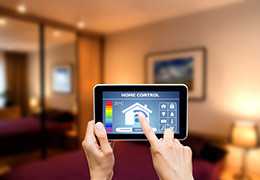 The Ultimate Smart Home Starter Kit: Must-Haves for Beginners (Affordability Edition)03/28/2024Posted in: GuideRead more
The Ultimate Smart Home Starter Kit: Must-Haves for Beginners (Affordability Edition)03/28/2024Posted in: GuideRead more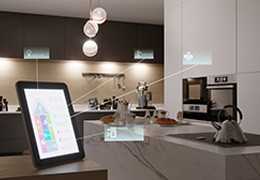 Illuminate Your Life: Home Lighting Automation Explained03/28/2024Posted in: Smart HomeRead more
Illuminate Your Life: Home Lighting Automation Explained03/28/2024Posted in: Smart HomeRead more
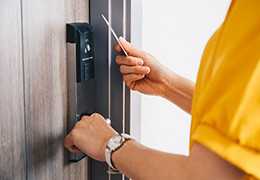 Enhance Your Home Security with a Smart Lock: The Ultimate Guide03/28/2024Posted in: Smart HomeRead more
Enhance Your Home Security with a Smart Lock: The Ultimate Guide03/28/2024Posted in: Smart HomeRead more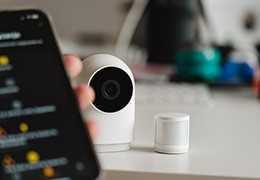
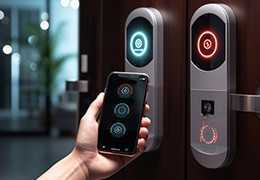 The Ultimate Guide to Home Automation Hubs02/12/2024Posted in: Smart HomeHome automation...Read more
The Ultimate Guide to Home Automation Hubs02/12/2024Posted in: Smart HomeHome automation...Read more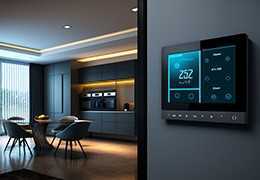 Enhance Your Security: Smart Home Solutions02/12/2024Posted in: Smart HomeIn today's...Read more
Enhance Your Security: Smart Home Solutions02/12/2024Posted in: Smart HomeIn today's...Read more Smart Light Compatibility: Ensuring Seamless Integration02/12/2024Posted in: Smart LightingIn the realm of...Read more
Smart Light Compatibility: Ensuring Seamless Integration02/12/2024Posted in: Smart LightingIn the realm of...Read more
 Beyond Convenience: How Smart Devices Can Enhance Home Security03/28/2024Posted in: GuideSmart home...Read more
Beyond Convenience: How Smart Devices Can Enhance Home Security03/28/2024Posted in: GuideSmart home...Read more The Ultimate Smart Home Starter Kit: Must-Haves for Beginners (Affordability Edition)03/28/2024Posted in: GuideTurn your home...Read more
The Ultimate Smart Home Starter Kit: Must-Haves for Beginners (Affordability Edition)03/28/2024Posted in: GuideTurn your home...Read more Illuminate Your Life: Home Lighting Automation Explained03/28/2024Posted in: Smart HomeThis guide...Read more
Illuminate Your Life: Home Lighting Automation Explained03/28/2024Posted in: Smart HomeThis guide...Read more
 Enhance Your Home Security with a Smart Lock: The Ultimate Guide03/28/2024Posted in: Smart HomeThis guide...Read more
Enhance Your Home Security with a Smart Lock: The Ultimate Guide03/28/2024Posted in: Smart HomeThis guide...Read more



Leave a comment